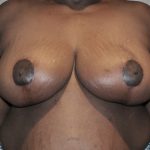
In my Indianapolis plastic surgery practice, I occasionally will get a patient who will ask if breast reduction will help their headaches. They are usually referring to chronic-type headaches and occasionally that of migraines as well. My traditional answer has been…’if you get improvement great but I wouldn’t count on it.’ My belief was that upper trunk muscle strain and pain would be relieved but not that of the upper neck.
In the January 2010 issue of Plastic and Reconstructive Surgery, the association of breast reduction and headache improvement was studied. This paper looked at 84 breast reduction patients of whom nearly 70% (58) reported headches prior to surgery. After surgery, half of these patients (31) reported a greater than 50% reduction in headache severity and frequency and just over 20% (12) stated that their headaches were completely gone.
This study shows that women with large painful breasts who have chronic headaches may experience some significant relief. The question becomes why and how? Like the rest of the musculosleletal symptoms from large hanging breasts, their downward weight orientation works against the muscles that help stabilize the back and neck. Just look at the posture of large-breasted women and you will often see slumped and rounded shoulders and an almost forward body tilt.
The authors postulate, and probably accurately so, that this same mechanism accounts for headache pain…and its subsequent relief after surgery. The downward pull on the muscles of the neck not only strains it but also applies pressure on the large occipital nerves that exit out through it as they come out from underneath the base of the skull. By being pulled down, the nerves are stretched and irritated. Such a point of traction could well be one reason that headaches (particularly those that eminate from the occipital region) may exist.
This new information provides hope for some breast reduction patients that their headaches may show some relief after surgery. It should be pointed out, however, that nearly half of the patients in this study showed no improvement so expectations should be tempered as possible but not absolute.
The use of headaches for insurance eligibility for breast reduction surgery is not an accepted criteria on its own at this time. This reported study is the first of its kind but I suspect it will be successfully reproduced by others. The anatomic mechanism is too appealing to not have some merit. Every breast reduction patient has numerous other sites of muscle pain and headache relief would be a bonus, not the determining factor of the operation’s success.
Barry L. Eppley, M.D., D.M.D.
Indianapolis, Indiana



